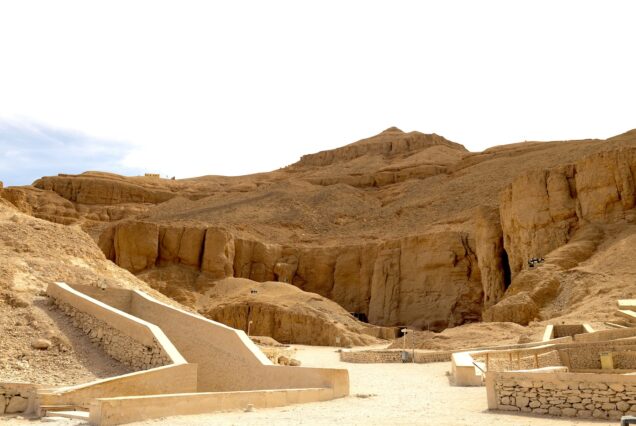Experience the richness of Luxor city Egypt with a full-day Luxor East & West Bank Tour. Dive into both sides of the Nile river valley, exploring majestic temples, relaxing river views, and sacred tombs. This tour offers a complete day of ancient history, architectural grandeur, and deep connection to the meaning of Nile River in Egypt’s heritage.
Highlights
-
Guided visit to Karnak Temple and Luxor Temple on the East Bank at morning light, when the carvings glow and crowds are lighter.
-
Afternoon drive across the Nile river valley to the West Bank, including Valley of the Kings and Mortuary Temple of Hatshepsut, with Colossi of Memnon viewpoint.
-
Expert Egyptologist narrates flood-cycle legends, meaning of Nile River, and daily rituals of pharaohs to enrich your visit with history.
-
Free time in local bazaars or at scenic Nile views to soak in visuals, local life, and photo moments.
Included/Excluded
- Private air-conditioned transport for the day between East and West Bank sites
- Certified Egyptologist guide during visits to all temples and tombs
- Entrance fees to major sites (Karnak, Luxor Temple, Valley of the Kings, Hatshepsut)
- Bottled water, lunch, and local transfers included
- Departure Taxes
- Optional tombs or sites not listed in the standard itinerary (additional tickets)
- Tips for guide and driver — gratuities not included
- Personal expenses (souvenirs, snacks, drinks beyond what’s included)
Tour Plan
Crossing to the West Bank, your first stop lies in a dramatic ravine carved into the desert hills. The Valley of the Kings contains over 60 royal tombs from Egypt’s New Kingdom era. You’ll enter a select few tombs, observing vivid painted scenes of gods and the afterlife. Spend time in the visitor center and walk among tomb entrances hidden in cliffs.
Nestled against sheer cliffs at Deir el-Bahri, the Temple of Hatshepsut stands as a tribute to one of Egypt’s few female pharaohs. Its terraced colonnades and clean symmetry reflect architectural audacity. Inside, reliefs depict her divine birth, trading expeditions, and dynastic legitimacy. Quiet courtyards offer reflection amid ancient stone and desert light.
On your way back from the valley walks, you’ll pause before two giant seated statues, known as the Colossi of Memnon. These 18-meter-high figures represent Amenhotep III and once flanked his mortuary temple. Though the temple is gone, these statues persist as silent guardians of Luxor’s past, offering a photogenic landmark and rest stop.
The journey returns to the East Bank where Karnak unfolds across a vast complex. Its Great Hypostyle Hall features 134 sandstone columns, some soaring 24 meters high, creating a forest of stone that still draws awe. Reliefs and inscriptions record royal campaigns and religious rituals. Walk the sacred lake, pylons, and chapels with stories layered through centuries of pharaohs.
Your final stop rests in the heart of modern Luxor, yet it echoes ancient devotion. Built primarily under Amenhotep III and expanded by Ramesses II, Luxor Temple served as the endpoint of the Opet Festival. Its colonnades, sanctuaries, and statues of gods and kings reflect Luxor’s continued role as a ritual center. As dusk falls, the stone often glows golden, quietly connecting past and present.















Alani –
I thoroughly enjoyed myself and thought it was one of the best vacations I’ve ever had.